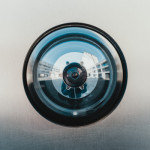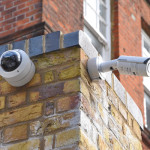Why You Should Install A Dash Cam
Dash cams are growing in popularity as more and more drivers are finding value in installing them. Whether you install a simple, front-facing dash cam or invest in a more comprehensive monitoring system for your vehicle, there are many ways these devices can benefit you. Here are a few reasons why you may want to consider installing a dash cam in your car.
- Accidents
When accidents occur, drivers recollections can vary. Normally, police would gather reports from those involved in the accident along with any eye witnesses. However, with dash cam footage, you have hard evidence of the incident which can help determine who was at fault and potentially save you from increased insurance rates. In addition, the video footage can possibly expedite your claim by avoiding numerous discussions with insurance companies to determine who was at fault. - Tickets
Your dash cam may save you from a wrongfully issued ticket. Since moving traffic violations typically give you points on your state driving record, which usually result in higher car insurance rates, it may be worth it to install a dash cam. If you feel you were wrongfully stopped, you can supply the officer with your dash cam footage. If the officer refuses to watch it, you can bring it to court to contest your ticket. - Insurance Fraud
Unfortunately, insurance fraud is more common than you would think. If you feel you may have been involved in or witnessed a staged accident, your dash cam footage can be turned into the insurance companies involved or the state insurance fraud unit for investigation. - Improve Driving
If you feel so inclined, you can review your daily driving videos to become a better driver. You can watch your videos to identify driving mistakes and ways to prevent them, such as braking too hard or switching lanes abruptly. - Teenage Drivers
If you have teenage drivers in the family, you can review their driving skills and habits so you can help them avoid accidents or tickets. For these cases, a two-way dash cam can help you see what’s going on both on the road and inside the vehicle. Not only can this help keep your child safe, but a clean driving record can keep your insurance rates low as well. - Security
Some dash cams provide a standby mode which allows the camera to turn on when motion in or around the car is detected. If someone tries to break into your car or hits your parked car, you get video footage to identify what happened and the persons responsible. You can submit this as evidence to the police as well as your insurance company to prove how the damage was done. - Unexpected Events
You’ve seen those viral dash cam videos that capture incredible events like meteors or other celestial events in the sky. While these are interesting and often once in a lifetime occurrences, you can also capture things like a deer running into the road causing an accident or a rockslide that caused damage to your car. In these instances, you can provide your insurance company with evidence to prevent rate hikes.
If you have a dash cam in stalled in your car, how have you benefited from it? What made you decide to install a dash cam? Share your experiences with your peers and us on Facebook, Twitter, LinkedIn, and Pinterest.
Visit SecurityCamExpert.com to browse our selection of security cameras, CCTV surveillance packages and more. You can call 888-203-6294 to schedule a site survey or request a FREE quote today!
Protect Your IP Surveillance System
These days, IP security cameras are much easier to use and are more commonly utilized for home security. Whether home owners want to watch their property or their pets, IP security cameras seem to be the surveillance solution of choice.
Unfortunately, these home security systems are often targeted by hackers and bots. To better safeguard your IP cameras and privacy, check out these helpful IP security camera tips.
Update Firmware
Modern IP security cameras provide user-upgradeable firmware. When a security vulnerability is found, the manufacturer will fix it by issuing a firmware update. If your cameras are operating with an older version, they may be vulnerable to exploitation from hackers or online voyeurs. Always be sure that your firmware is up to date and routinely check for updates to protect your system.
Keep Cameras Local
The concept is simple – If you are worried about your live feed ending up on the internet, do not connect your cameras to the internet.
To protect your privacy, keep your security cameras on a local network and assign them non-routable internal IP addresses (ex. 192.168.0.5 or the like). But even then, your cameras may still be exposed by camera software that sets up port forwarding or uses UPNP to expose your cameras to the internet. Make sure your cameras are set up on local-only mode – consult your installer or check the manufacturer’s website to learn how.
Assign Passwords To Cameras
All too often, users forget to add password protection on their IP cameras, and sadly, this is not usually turned on by default. Without this, IP cameras are left wide open and vulnerable.
Luckily, most cameras offer at least some form of basic authentication, and although it may not be much, it is better than nothing. Remember to protect your cameras by assigning a username and strong password and changing it periodically.
Change Defaults
We cannot stress this enough – Always, always, ALWAYS change the default usernames and password for your devices. In case you didn’t know, the default admin name and password for your IP camera is usually available on the manufacturer’s website in the support section. That said, if you don’t change these defaults, anyone could potentially access your security system, view your feeds, and control your cameras.
WPA2 Encryption
If you’re using a wireless camera, you should only connect it to a WPA2-encrypted wireless network. This will minimize the risk of wireless eavesdroppers connecting to your network and accessing your video feeds.
Be Mindful Of Locations
Don’t place IP security cameras in areas of your home that you wouldn’t feel comfortable with strangers seeing. Regardless of the security measures to protect your camera feeds, there is always a possibility of getting blind-sided by a Zero-Day vulnerability that hasn’t been found by the manufacturer yet.
Share your own tips and experiences with us on Facebook, Google+, Twitter, LinkedIn, and Pinterest. For a wide selection of IP security cameras and more, visit SecurityCamExpert.com or call 888-203-6294 today!
Advantages Of Video Surveillance For Business
Video surveillance can be an excellent security measure in various environments. While retail stores and remote ATMs are commonplace locations for video surveillance, its benefits can also be seen when applied to a wide range of businesses and homes. Here are a few examples of these video surveillance benefits and why you should consider investing in it (if you don’t already).
- Protection Of Assets
A major selling point for video surveillance is their effectiveness as a crime prevention tool. The mere presence of these cameras can discourage criminals from trespassing, vandalizing, and stealing your property.
- Employee Protection
By installing surveillance cameras in parking garages or remote parking facilities, rear or side building entrances, and other dimly lit areas, you can increase employee safety and security. Not only does this protect your property, business, and employees, but it also shows employees that you care and value them.
- Legal Protection
Your video surveillance cameras can even deter frivolous lawsuits (and save you money). For example, let’s say a person claims to have injured themselves on your property and threatens a lawsuit. Without video evidence it’s your word against theirs. However, proper video surveillance footage provides concrete evidence of the incident.
- Discounts On Property & Liability Insurance
Often times, insurance companies offer discounts for home or business owners who have video surveillance cameras installed. These discounts can potentially offset the costs of your surveillance system.
- Increased Employee Productivity/Theft Prevention
A watchful eye can help to keep your employees on track. Employees are much more likely to stay on task when they are being monitored. Security cameras placed around the building, at loading docks and auto dealer service bays have been proven effective for improving productivity. In addition, employees are less likely to take off with company property when cameras are monitoring exit points.
- Remote Monitoring
Remote monitoring is a common and popular security feature, which will enables surveillance around the clock, even after your and staff have gone home. You can utilize this on its own or you may supplement your staff and guards.
Share your own video surveillance benefits with us and your peers on Facebook, Google+, Twitter, LinkedIn, and Pinterest!
For a great selection of CCTV video surveillance packages, security cameras, and other security solutions, please visit SecurityCamExpert.com. To schedule a site survey, request a free quote, or inquire about our installation services, please call us 888-203-6294.
DVRs: What You Need To Know
When shopping for a security system for your home or business, it may be easy to focus on the specific features of the security cameras. However, much attention should be paid to video surveillance storage as well. DVRs (digital video recorders) are an integral part to the overall surveillance system. Here are some of the features and specifications of DVRs that you should pay close attention to.
Frame Rate
A frame rate is a unit of measure denoting the number of frames recorded in each second by a DVR in a specific resolution. Calculations should be made based on the real-time frame rate of about 30 frames per second (FPS). For example, in order to record real-time video on a standard 16-channel system, you would need a DVR that has 480 FPS.
Remember that sellers may claim real-time images as the units display live video at about 30 FPS on each channel, but this needs to be assessed based on the recorded video footage (not the live video). A basic unit may record videos at less than 30 FPS while a top-end unit may deliver 30 FPS on each channel.
Video Resolution
Resolution is the size of the image displayed or recorded. The most popular resolution is CIF – 360×240, and the highest is specified as D1 – 720×480. This is an important specification to consider as larger recorded images afford you additional details for review. For example, 4CIF images can feature views detailed four times as much as a base CIF image. You can find a variety of DVRs boasting anywhere from CIF to D1 resolutions.
Compression
When the video is transferred to the DVR for storage, it is first compressed to save space and to make Internet viewing fluid. Compression standards can vary from basic to nearly no compression protocols (ex. MJPEG or wavelet) to the top-end compression methods (ex. MPEG4). Currently, the highest compression standards are H.264 (which is 40% more efficient than previous versions).
While compression methods may vary in DVRs, hybrid DVRs are available. These are capable of using a combination of compression methods, and can also be used to do compressions separately (Internet streaming vs. recording).
Storage Space
You will need to know how much data your DVR can hold. Presently, baseline DVRs may allow one or two hard drives only, while more advanced models now offer 6, 8, or more internal hard drives based on user requirements.
Popular DVRs also offer redundant storage (RAID) configuration and FTP uploads. The FTP uploads feature allows backup of video for the DVR at an off-premise FTP server. This helps to avoid any possibility of loss in the case of a local system crash or a DVR robbery.
Audio Recording
Audio can sometimes be an important addition to video footage. Some DVRs may accommodate synced audio and video, with lower-end versions having one to four channels and higher-end options offering up to 16 channels. Be sure to review the laws and legalities in regards to audio recording.
Video Out
There can be a wide variety of video output, from BNC to VGA to HDMI. If you have a mix of these, you may need to invest in quality converters to ensure proper connections and performance.
Viewing Remotely
Network IP surveillance systems allow users to access video footage via the Internet from virtually anywhere. Advanced systems even allow viewing more than one DVR at a time. These DVRs can boast specialized features such as camera groupings, e-mapping, different levels of user privileges, and more.
If you need assistance in choosing the right DVR and security cameras for you, please feel free to contact us 888-203-6294 or browse our vast selection online at SecurityCamExpert.com. You can also connect with us on Facebook, Google+, Twitter, LinkedIn, and Pinterest.
Home Security Mistakes & Tips
Making mistakes when it comes to your home security can compromise your safety, leaving you vulnerable to burglary and theft. When choosing the best home security system for you, avoid making these common security mistakes and ensure that you properly safeguard your home and loved ones.
Mistake: Buying The Wrong Home Security Systems.
There is no “wrong” home security system, however, what works for one person may not work for you. This is precisely why there are various types of security systems on the market.
In order to choose the best system for you, do your research. You want to look at different reviews from reputable sources. Search the security system you are eyeing, or the type of system you’re looking for. In addition to reviews, pay attention to any complaints from real buyers that you may come across. There may be legitimate issues that you should know about before making a purchase.
Also, these are some important features you should consider when shopping for a security system:
- Remote monitoring
- Real-time notifications
- 911 & emergency services
- Input capacity
- Ease of installation
Lastly, to help you make the right decision, and possibly save you time, you should speak with a security professional. With expert knowledge and experience under their belt, a security professional will have a better idea of which type of security will best suit your needs.
Mistake: Not Testing Your Configurations.
It is rare that one home security system is enough for all your home security needs. For added protection, some components to consider may include:
- Indoor and outdoor cameras
- Motion sensors
- Smoke detectors
- Carbon monoxide detectors
- Glass break detectors
- Door and window sensors
- Freeze sensors
- Water sensors
- Driveway sensors
Of course, these are just some of the many components you may or may not want to add to your system. Whether you have one security camera or 20 different cameras and sensors, you should test all of them to ensure proper configuration and performance. For example, you may not know that your camera is poorly positioned or that your alarm system was not properly activated.
Try simulating a break-in with a friend, family member, or your pet to determine the capabilities of your home security system. Most criminals are seasoned vets so they probably know how to bypass one of more components of your system, thus having more aspects can help to ensure they are stopped.
Mistake: Lack Of/Poor Maintenance Of Home Security System.
Your security system should be maintained on a regular basis, whether it’s weekly, monthly, semi-annually or annually – do what’s best for what you need. Maintenance can involve various things such as updating software, changing batteries, changing faulty or defective parts, and more.
Professional Maintenance
Professional maintenance can be done annually or semi-annually. You may want to check if your vendor offers any maintenance packages in the service contract. If they don’t, you can enlist the services from a home security inspection company.
The services typically consist of the following:
- Repair or replace broken parts of your home security system
- Test the control panel and all other components of your home security system
- Check that signals are sent to and received by the monitoring center
Professional maintenance ensures that there’s no guesswork in handling, fixing or replacing faulty components of your system.
DIY Maintenance
Your DIY checklist should include:
- Check/change exterior lighting to ensure clearer pictures or videos for your surveillance cameras
- Simulate intrusion to check if motion sensors will detect it or trigger the right alarm
- Test your control panel if it has a test model but if your system includes remote monitoring (which it should), inform the monitoring team to avoid starting a false alarm
- The National Fire Alarm Code requires annual inspection of residential household fire systems, but you can press the test button of your smoke detector to see if it’s functioning properly from time to time
Keep these tips in mind in order to avoid these critical mistakes when shopping for a home security system.
If you’re looking for quality CCTV surveillance systems and security cameras for smart prices, feel free to browse our stock online at SecurityCamExpert.com or call 888-203-6294 to speak with an expert today! Find the latest news and updates on our Facebook, Google+, Twitter, LinkedIn, and Pinterest pages.
Home Security Camera Placement Tips
When it comes to security camera systems, you can invest in the best, most advanced equipment, but choosing poor locations for your security cameras can render your system ineffective.
In order to choose the best placement for your surveillance cameras, you should consider the layout of your property and which areas need monitoring. Most home or business owners target high traffic areas and entryways.
Here are more helpful tips for installing your security cameras.
- The most commonly targeted entryways are the front door, back door, and first-floor windows, so be sure these are under video surveillance.
- In addition, a security camera at the front door can act as a digital peephole since you can access your live feed to see who’s at the door. You can place it above the door or window frame facing downward so that it covers the area a few feet in front of the opening. Or you can place it inside your home on the window sill overlooking the front yard.
- The type of camera will also help determine where it should be placed. Surveillance cameras with a focus range of around 45 to 75 degrees should be aimed at specific areas (ex. doorway, garage). Wide angle cameras should be placed where they can view 75 to 180 degrees without any obstructions. For security cameras that can rotate, be sure to check with the manufacturer for information on how much unobstructed viewing area is necessary.
- For surveillance cameras being installed outdoors, be sure they are waterproof, vandal proof, and have night vision capabilities in order to record overnight. Motion detection lights around the perimeter of your home can also help capture quality recordings as well as deter burglars from approaching.
- In addition, when placing security cameras outdoors, you want them to be visible yet out of reach. By installing them at least 9 feet above the ground, you decrease the likelihood of tampering, vandalism, or theft of your cameras.
Do you have any security camera placement advice or tips to share? Connect with us on Facebook, Google+, Twitter, LinkedIn, and Pinterest.
Shop our great selection of quality CCTV security cameras and surveillance systems for your home or business. Visit us online at SecurityCamExpert.com or call 888-203-6294.
Night Vision Cameras Vs. Thermal Cameras: Which Is Better For You?
When it comes to securing the perimeter of your home or business, you want a surveillance system that can perform in various conditions. For 24-hour monitoring, night vision cameras have been the popular solution. However, the emergence of thermal cameras has provided a more advanced solution. Learn more about the different types of night vision cameras and how thermal cameras differ from them.
Low-Light Cameras
These are also known as day and night cameras and electronically and automatically adjust lighting capture settings based on the time of day to produce optimal video images. During the day, IR cut filters are used to “cut out” IR illumination, allowing for color images. At night, the filter is removed entirely to allow the maximum amount of visible and IR light to reach the sensor and produce a monochrome image. The downside to these cameras is that they are completely dependent on lighting conditions. That is, too much light or no light at all will result in unusable images. Thus, the amount of visible light available drastically affects the image.
IR Cameras
IR cameras have a lens that is surrounded by LEDs which emit a beam of near-infrared energy to bounce off objects in its field of view. The image sensor is then able to create a picture; however, distance plays a crucial role in performance. Because the reflected IR light can only reach so far, these cameras are often limited to short-range applications.
Night Vision Cameras
Night vision goggles (NVG) and cameras capture visible light photons. As the photons penetrate a photocathode tube (which acts as an image intensifier), they are converted to amplified electrons that pass through a phosphorous screen and converts them back to visible light to create a picture (often in a greenish hue). Because these devices need just the right amount of visible light to function, they are virtually useless when there is ample light outside (ex. twilight) or in conditions where light is blocked (ex. smoke) or no light is available.
Thermal Cameras
Rather than performing based on light availability, these cameras produce video surveillance images based on the measurement of the electromagnetic heat radiation emitted by all objects and individuals. Their performance is unaffected by bright lights, complete darkness, foliage, and light fog. No matter how small, differences in heat are picked up and produce images with high contrast, which are essential to the success of video analytics and intrusion detection. These cameras may be better suited for properties which require strict perimeter security (ex. oil and gas industries, data centers, mines, power stations), and are often combined with other layers of protection (ex. fence sensors, microwaves, PTZ cameras).
Thermal cameras also boast long-range detection capabilities, thus, reducing the number of cameras needed. They can also be a good substitute for fences where fence installation is not possible. For example, ports and oil refineries have acres of water and land to secure and monitor. Thermal imaging and video analytics can create “virtual fence” and can be a more feasible and affordable solution than installing a physical barrier.
Do you use night vision cameras or thermal cameras to protect your property? Share with us on Facebook, Google+, Twitter, LinkedIn, and Pinterest.
If you need help deciding which night vision or other security cameras will best suit your surveillance needs, please feel free to contact us at 888-203-6294 or visit SecurityCamExpert.com today!
The Future Of Retail Loss Prevention
Loss prevention tactics began with in-store monitoring and patrol. As our technologies evolve and the popularity of online shopping continues to grow, security measures have improved. In fact, a U.S. retail fraud survey revealed that spending on store fraud prevention declined while online fraud prevention spending increased.
Because cybercriminals are constantly sharpening their skills, loss prevention specialists are using new technologies to their advantage as well. For example, data analytics have helped specialists understand suspicious behaviors and patterns in the e-commerce and m-commerce environment, and social media vigilance has helped to identify potential threats.
As the retail industry continues to expand and grow, what’s to come in the future of retail loss prevention?
Video Surveillance
It’s true that retail uses a variety of different technologies to operate, including point-of-sale transaction profiling as well as RFID tracking. However, now more than ever, video surveillance is playing a larger and smarter role.
With video surveillance, loss prevention officers have been able to catch thieves in the act and the recordings have provided excellent evidence. With the introduction of built-in facial recognition technology and video analytics, video surveillance can do so much more.
In the same vein, the smart features, connectivity and convenience put these devices at risk. While their role is to protect the business, retailers must do their part to protect their devices, data, shoppers, and employees.
IT & Outside Vendors
Because of this, loss prevention specialists must develop their knowledge and skills with the new technology. They should understand how to use data analysis to identify ever-changing criminal activities, such as new ideas, concepts and schemes.
Loss prevention specialists, cybersecurity specialists and IT team members must all work together to create a system that complies with privacy issues and maintains heightened security to prevent any data breaches or disasters.
Development Of New Responsibilities
As retailers begin to shift from their brick-and-mortar stores (some even closing completely) to focus on e-commerce and m-commerce, the role of data loss prevention specialists will morph into something new, which encompasses more aspects involved in keeping a company safe and secure.
What are your thoughts on the future of retail and loss prevention? Share your predictions and opinions with us on Facebook, Google+, Twitter, LinkedIn, and Pinterest!
Choose the best security cameras and CCTV surveillance equipment to protect your business or home. Visit SecurityCamExpert.com to browse our selection today!
Networked Devices
It used to be common to see security guards monitoring public areas such as parking lots or building entrances, but, these days, the prevalence of security cameras is growing. Our means of surveillance is transitioning from human surveillance to networked devices. While some areas have added security cameras to complement their guards, others rely on comprehensive security systems.
There are numerous reasons why network security cameras are becoming more widespread. Aside from the covert nature of security cameras, technology allows us to do more with fewer risks. Rather than potentially putting a person’s life in danger, you can monitor your surveillance feed remotely and be aware of what is going on in various places. This will enable you to react in a timely manner and as safely as possible.
Some may oppose the implementation of security cameras for fear of an invasion of privacy, but they fail to acknowledge that other platforms that are seen as more acceptable can pose a threat. For example, loyalty programs often track and record your purchasing history and can be linked to your image through facial recognition technology. And think about how ads are becoming more tailored to the viewer’s interests. Common things like mobile phones, social media, credit cards, and more can offer data and insight about a person.
In comparison, surveillance cameras would simply be used to monitor public areas to improve safety. When crimes occur, footage can provide evidence, as well as paint the picture of events leading up to the incident.
Mass CCTV coverage has been achieved in cities like London and Melbourne. In some British cities, traffic light operation has been used to prevent criminals from escaping by car. This shows that networked devices can work together to increase safety and security.
There are obvious risks and benefits when it comes to networked devices and data collection. What are your thoughts on the use of connected devices and the Internet of Things in terms of security and surveillance? Do you think more cities will follow London and Melbourne’s lead and adopt a mass surveillance system? Share your thoughts with us on Facebook, Google+, Twitter, Vine, and Pinterest.
For a great selection of security cameras, CCTV surveillance equipment, and more, please visit SecurityCamExpert.com. To inquire about a site survey or our installation services, please call 1-888-203-6294.
The Future Of Security & Video Surveillance
As we ease into the New Year, there are several technology trends to watch. The Internet of Things has been on the radar for some time now, and more and more devices are becoming connected.
In terms of security, network IP cameras are nothing new. However, the influence of IoT and other technologies is having an interesting impact on security and surveillance. Here’s what we can expect, or hope for, in 2016.
IoT
As mentioned, the IoT devices remain in the spotlight. In terms of security, IoT-based systems will need to provide easy installation and maintenance, while catering to the specific needs of the user.
With an IoT-based security system, you may be able to incorporate other unrelated devices for an all-encompassing system. Combine your video surveillance with things like smoke detectors, gas sensors, or access control panels to monitor your home or property. Also, the IoT will enable video surveillance to expand its applications far beyond loss prevention. For example, your network IP cameras can be used to analyze traffic patterns and crowd behaviors in real-time.
However, as we continue to connect and share video and data over our networks, we must also think about reinforcing our network and cyber security.
Security as a Service
The Cloud is making its mark and will begin to play a more important role in security and surveillance. Not only can businesses utilize Security as a Service, where systems are managed remotely, but the Cloud offers more secure and cost-effective data storage. Archived video and data can be stored longer while being easily accessible as necessary.
Big Data
Thanks to security cameras and surveillance, video is becoming the fastest growing type of data. Aside from security purposes, surveillance video can be used for business intelligence. We can expect to see improvements for video management systems (VMS) to search and filter big data for relevant footage or information.
Wireless
Going wireless has played a significant role in our everyday lives already (ex. mobile phones and Wi-Fi). The same convenience has been applied to security systems, as whole security networks can be managed remotely through mobile phone and devices. Complicated software on stationary PCs is no longer necessary, making it easier for businesses to employ a more affordable and convenient security solution.
Details
We want everything to look sharp and clear, which is why technology continues to improve megapixel resolutions and technology. Some existing trends include the 4K ultra HD, which offers four times the resolution of HDTV 1080p. While analog CCTV cameras may work for some, most others will be attracted to the new and improved technologies and devices.
Analytics
In the coming year, we will also see an increased use of video analytics, for both security and business use. Video surveillance will expand its repertoire, becoming useful for more industries such as advertising and marketing.
Do you have any technology or surveillance predictions for 2016? Share your thoughts with us on Facebook, Google+, Twitter, and Pinterest.
For great prices on quality security cameras, CCTV surveillance equipment, and more, visit us online or call 1-888-203-6294 to speak with us directly.






